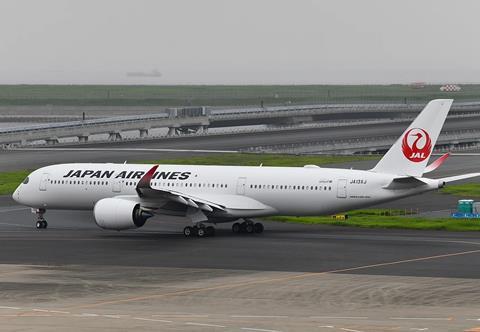Tokyo’s Haneda airport was operating in mixed mode – with both departures and arrivals on the same runway – at the time of the collision involving a landing Japan Airlines Airbus A350-900.
But the circumstances of the accident, in which the A350 struck a Japanese Coast Guard Bombardier Dash 8-300 turboprop, as the jet arrived on runway 34R, have yet to become clear.
Japanese prime minister Fumio Kishida told a briefing on 2 January that all 379 passengers and crew on the A350 evacuated safely.
But five of the six crew on the Dash 8, which was operating in response to the Noto peninsula earthquake, did not survive the accident. The aircraft was transporting humanitarian supplies to Niigata airport.
Japanese minister of land, infrastructure and tourism Tetsuo Saito adds that only the captain of the Dash 8 escaped, sustaining injuries.
“We will be making the utmost effort to work out and analyse this accident,” he says, but adds that the “root cause” has not been established.
Saito says the area of the accident will be secured, while efforts will be made to restore operations to normal across the rest of Haneda airport.

Several flights were queued for departure on 34R at the time, 17:47 on 2 January.
The status of clearances given to the aircraft involved, the position of the Dash 8, and whether its crew had visibility regarding the arriving A350, have not been confirmed.
But the A350 appears to have been instructed to continue its approach and, about 2min later, been granted landing clearance on 34R, according to communication captured on LiveATC archives.
Images from the scene, carried on Japanese TV, suggest the A350 sustained impact damage to its left-hand Rolls-Royce Trent XWB-75 engine – a derated version of the standard powerplant – as well as possible radome damage and a collapsed nose-gear.
“We have a fire on the runway, 34R,” another Japan Airlines crew informed Haneda tower moments after the accident, prompting controllers to order other inbound aircraft to go around.
The accident resulted not only in a fire on the A350 but also a considerable blaze at the impact point, both of which were tackled by Haneda firefighting personnel, and a trail of burning fuel.
But all 367 passengers and 12 crew on board the A350, operating flight JL516 from Chitose near Sapporo, escaped before the twinjet was consumed by fire.
Destruction of the aircraft marks the first loss of the type since it entered service almost exactly nine years ago. The jet lost at Haneda (JA13XJ) was barely two years old, having been delivered to Japan Airlines in November 2021.
Airbus states that it is sending a team of specialists to provide technical assistance to Japanese and French investigating authorities. Five Airbus personnel and four from French investigation agency BEA are being deployed to the site.


























